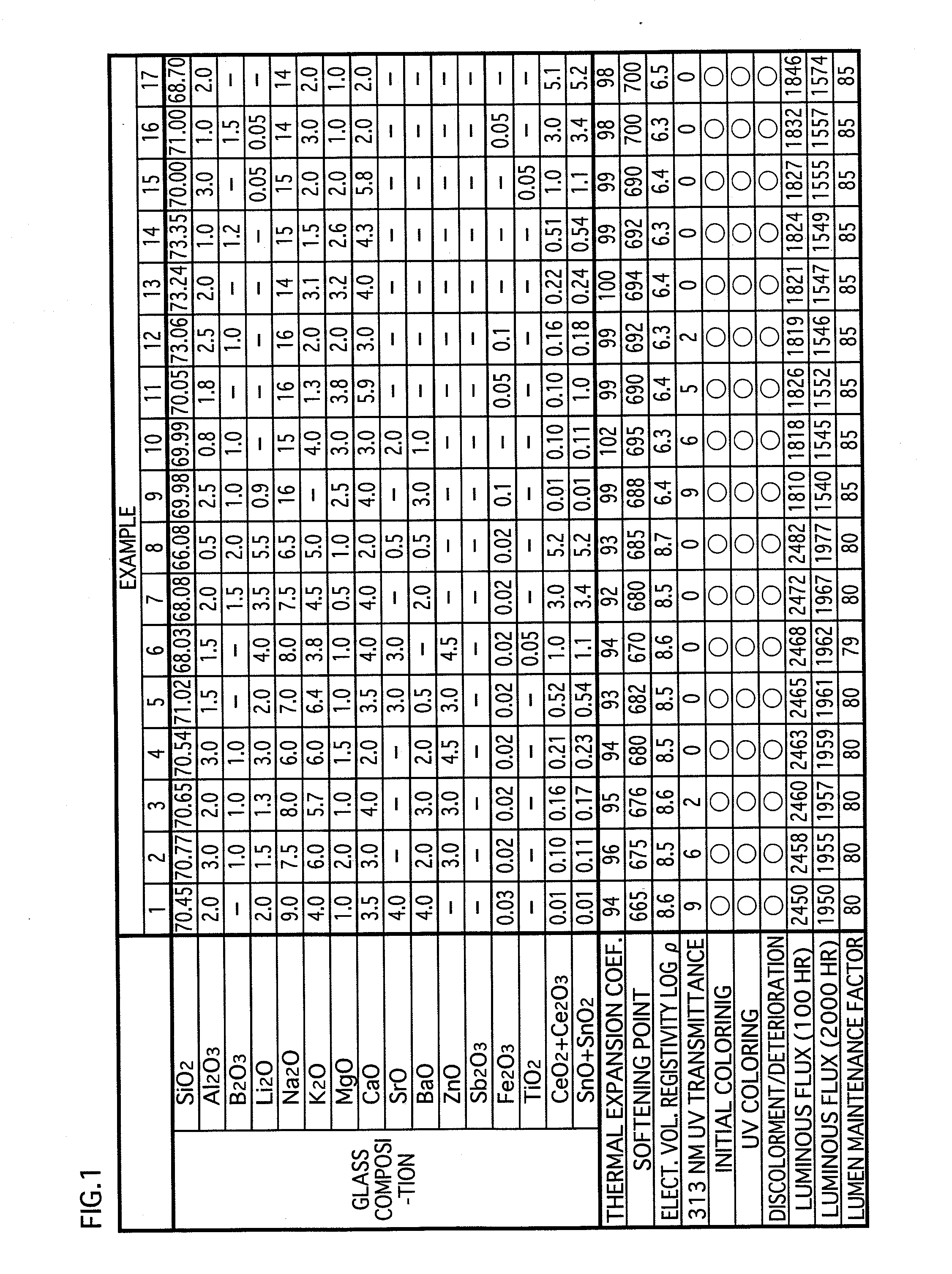Glass composition for lamp, glass part for lamp, and process for producing lamp or glass composition for lamp
- Summary
- Abstract
- Description
- Claims
- Application Information
AI Technical Summary
Benefits of technology
Problems solved by technology
Method used
Image
Examples
Embodiment Construction
[0045]The following describes a glass composition for lamps, a glass part for lamps, a lamp, and a process for producing a glass composition for lamps that are in accordance with embodiments of the present invention, with reference to the attached drawings.
[0046](Description of Glass Composition for Lamps)
[0047]The glass composition in accordance with the embodiments of the present invention contains substances expressed in terms of oxides shown in examples 1-17 in FIG. 1 and examples 31-34 in FIG. 3. Note that the glass composition (hereinafter called simply “glass”) in accordance with the present invention is not limited to that of the examples 1-17 and the examples 31-34. However, for maintaining the favorable properties of the glass for lamps, it is preferable to substantially include the following expressed in terms of oxides: SiO2: 60-75 wt %; CeO2+Ce2O3: 0.01-5.2 wt %; SnO+SnO2: 0.01-5.2 wt %; Al2O3: 0.5-6 wt %; B2O3: 0-5 wt %; Li2O+Na2O+K2O: 13-20 wt %; MgO: 0.5-5 wt %; CaO:...
PUM
| Property | Measurement | Unit |
|---|---|---|
| Temperature | aaaaa | aaaaa |
| Angle | aaaaa | aaaaa |
| Wavelength | aaaaa | aaaaa |
Abstract
Description
Claims
Application Information
 Login to View More
Login to View More - R&D
- Intellectual Property
- Life Sciences
- Materials
- Tech Scout
- Unparalleled Data Quality
- Higher Quality Content
- 60% Fewer Hallucinations
Browse by: Latest US Patents, China's latest patents, Technical Efficacy Thesaurus, Application Domain, Technology Topic, Popular Technical Reports.
© 2025 PatSnap. All rights reserved.Legal|Privacy policy|Modern Slavery Act Transparency Statement|Sitemap|About US| Contact US: help@patsnap.com



